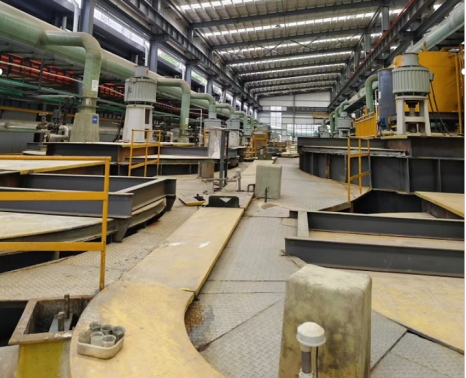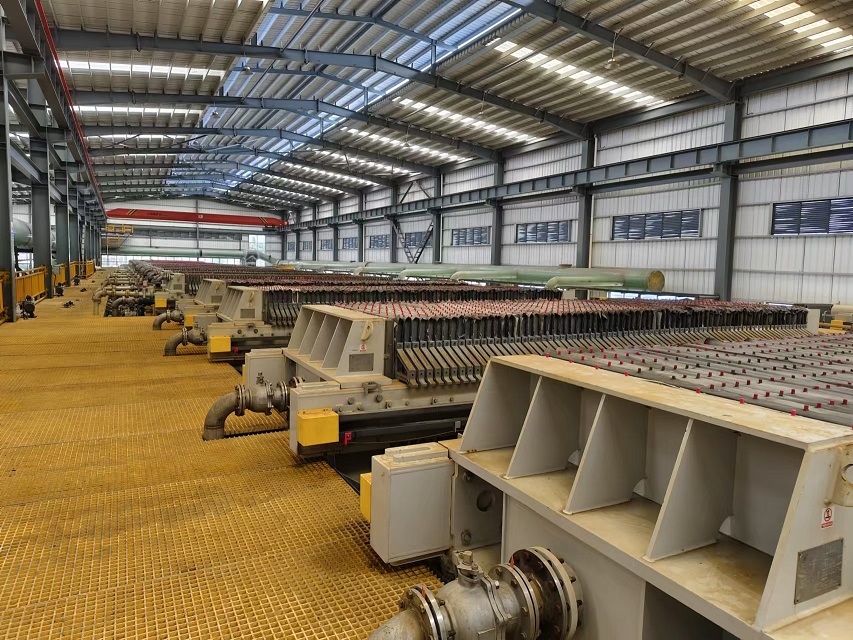How to improve economical benefits in Zn eletrolytic production

1.Changes in raw material effects the stability of production
Regardless of the scale, electrolytic zinc production factory have a problem of raw material changes or fluctuates, such as: concentrate supplier changes, main metal and impuritie changes, metal input structure changes. Tailor-made raw material process route and flexible management are the most effective means to improve the adaptability of enterprises to complex raw materials. For example, the solution filtration performance of the leaching section or the thickener clarification problem, many companies can only blindly increase the flocculant dosage, reduce the metal input and other measures to alleviate the problem. In fact, there are both the impact of the particle size change of the raw material and the negative impact of the impurity change of the raw material itself containing soluble silicon and iron.
2.Efficient recycling of main metals and other valuable metals can expand the living space of Zn electrolytic supplier
The recovery directly determines the living space of Zn electrolytic producer, taking Zn concentrate as raw material to produce electrolytic zinc as an example, the current treatment charge is squeezed to less than 3000CNY/t. First, every 1% loss in the recovery rate of the main metal means that the cost of raw materials is more than 200 CNY/t; Second, the offset of valuable metal recovery can effectively reduce the comprehensive cost, such as the Ag recovery rate increased by 10%, which means that each 1t Zn product can increases the silver recovery by 20g, or 120 CNY as economical benefit. The yield of main metal is mainly optimized by leaching system and process parameter control. The yield of other valuable metals, which should be set up for the specific raw material characteristics of the recovery process, comprehensive recovery benefits, is absolutely the survival of zinc smelting enterprises. In the electrolytic zinc process, the main valuable metals recoveries are: In recovery≥85%; Ag recovery≥85% (silver concentrate containing ≥3000g/t); For copper, the recovery rate depends on the setting of leaching system, conventional leaching recovery rate ≥55%, hot acid leaching recovery rate≥90%; Cd recovery ≥90%.
3.The precipitation stability of large plate electrolysis determines the “far ahead” of the technical and economic indicators.
The precipitation condition of electrolytic process is good and stable, which is the basis for the success of electrolytic zinc production enterprises. The change of electrolytic precipitation status is not only the barometer of our whole system production control, but also the process control of leaching and purification. Only on the premise of stable precipitation, we can discuss the power consumption, direct yield, zinc grade, anode and cathode consumption and other key indicators related to the processing cost of tons of zinc.
4.Application of Deep Purification Technology
At present, the most widely used purification process in the market is zinc dust – antimony salt purification method, which is mostly reverse method (domestic large state-owned companies use this method), but there is also a forward antimony salt method (Hunan Xuanhua Zinc Industry), the first large-scale production application of this process is in Zhouzhou Smelter 100kt zinc production line, put into production in 1996, with 30 years of development, it has fully become the mainstream purification process. However, the problems of Co re-dissolution and high Zn powder consumption in antimony salt purification process have always existed. In order to reduce the fluctuation of solution after purification, on the basis of the original three stages of purification, there are additional high temperature section, activated carbon oil removal, secondary filter press section and other process improvements.
In 2008, Zhuzhou Smelter introduced arsenic salt purification technology from Outotec, and through more than 10 years of application and improvement, it runs well and has become a business card of the company’s leading technology. Its advantages are stable solution after purification (no fluctuation), low consumption of zinc powder, and high enrichment of purification residue produced in stages. One is the problem of investment (high degree of automation), the second is the arsenic hazard, domestic enterprises rarely copy the case of the process, but we can learn from the three control concepts of the technology, one is the BT value, the second is the kind, the third is the potential.

5.The F and Cl balance has become a stumbling block for enterprises in expanding the raw material market.
Due to the gradual severity of environmental protection policies such as Zero Waste Water Discharge and waste gas treatment, the problem of fluorine chloride balance has become another concern after the “three balance” points of electrolytic zinc enterprises. Instead of ion exchange, the dechlorination process of copper slag has become an important means in the production control of electrolytic zinc enterprises, and the necessary courses for enterprises to master the technology of cuprous slag production and cuprous chloride regeneration. In addition, for enterprises that use secondary zinc resources as raw materials to produce electrolytic zinc, such as EAF dust and zinc dross, pretreatment processes such as alkaline washing and high-temperature kiln should be added on the premise of retaining the chlorine removal of copper slag to ensure that the chlorine content of neutral leaching solution is less than 1g/l. The selection of pretreatment process should be related to local conditions, industrial policies, prices of auxiliary materials, and supporting facilities of the park.
Post time: Sep-24-2024

